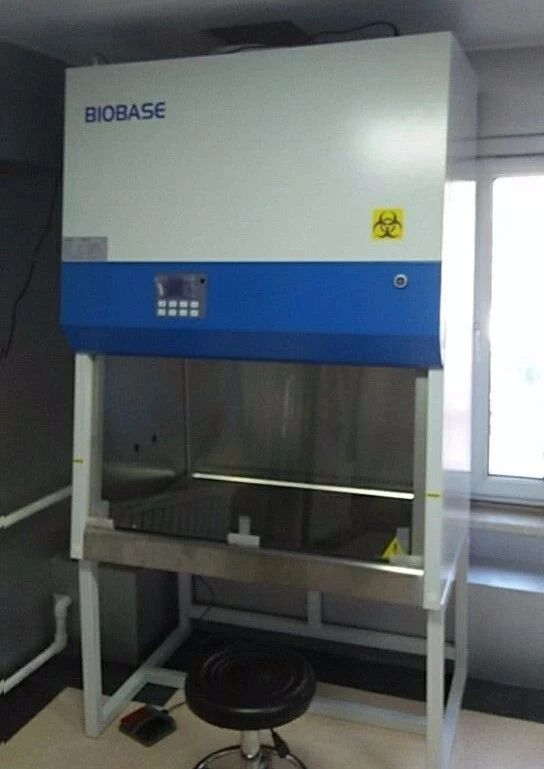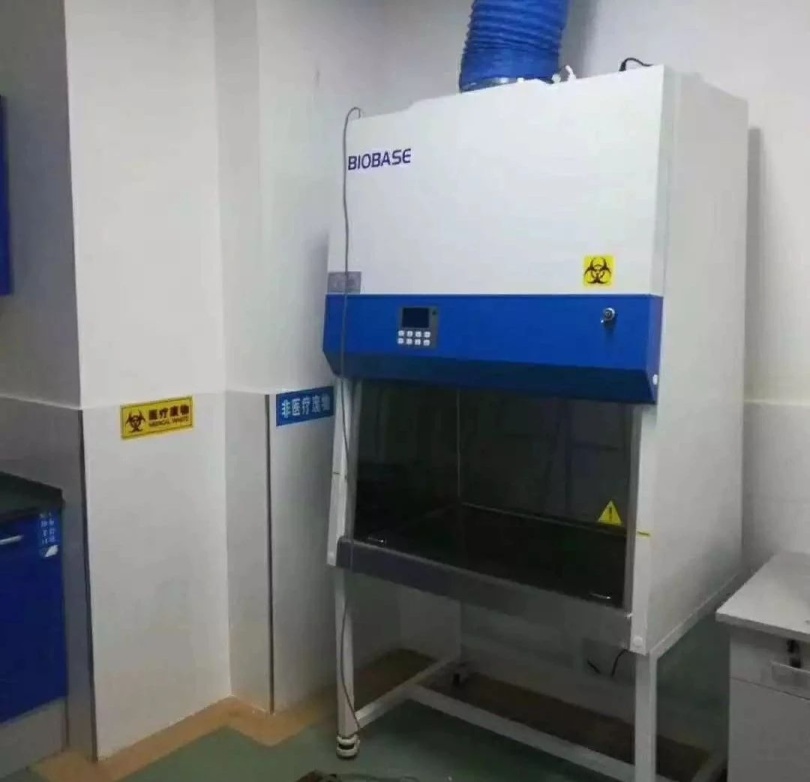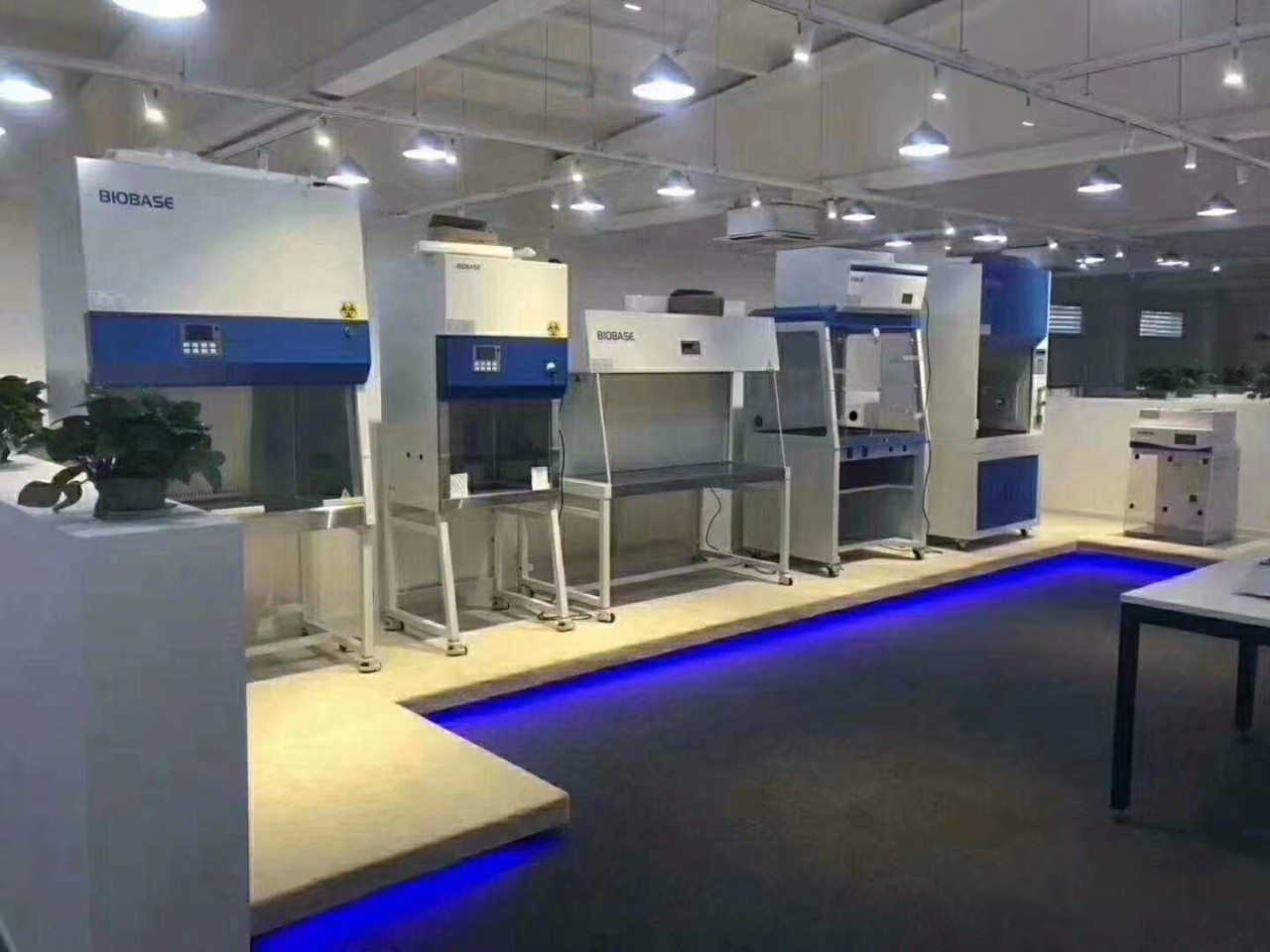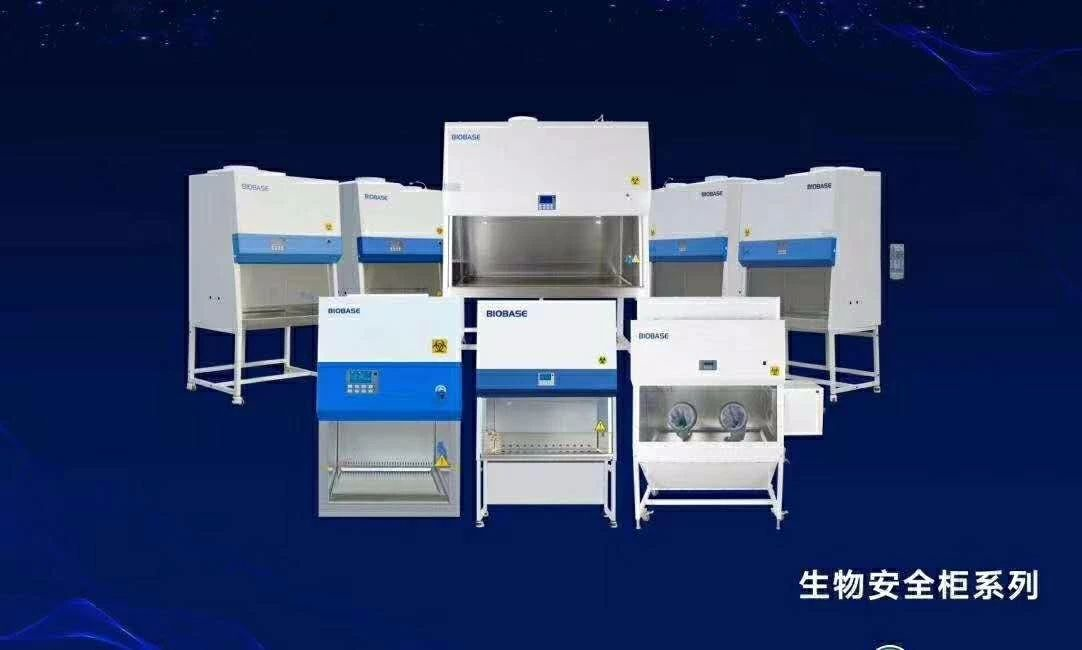The biosafety cabinet protects the operator, the laboratory environment, and the laboratory materials from exposure to the above operations in order to manipulate infectious materials such as primary cultures, bacterial strains, and diagnostic specimens. Designed for the production of infectious aerosols and spills.
Today we will talk about the biological safety cabinet from the perspective of using principles, categories, functions and so on.
effect
A negative pressure filtration fume hood that prevents the operator and the environment from being exposed to bioaerosols produced during the experiment is the primary device for preventing laboratory-acquired infections.
working principle
The air in the cabinet is pumped outward to maintain the negative pressure inside the cabinet, and the vertical airflow is used to protect the staff; the outside air is filtered through the high-efficiency air filter and then enters the safety cabinet to avoid contamination of the sample; the air in the cabinet is also It is filtered through a filter and then discharged to the atmosphere to protect the environment.
Classification of biological safety cabinets
1 level biological safety cabinet
It protects the worker and the environment without protecting the sample. The airflow principle is basically the same as that of the laboratory fume hood. The difference is that the exhaust port is equipped with a HEPA filter to filter the external exhaust stream to prevent the diffusion of microbial aerosols. The first-class biological safety cabinet itself has no fan, and relies on the fan in the external ventilation pipe to drive the airflow. Since it cannot protect the products in the cabinet, it has been used less frequently.
2 secondary biological safety cabinet
At present, the most widely used cabinet type, according to the "People's Republic of China Pharmaceutical Industry Standard YY0569-2005 Biological Safety Cabinet", the secondary biological safety cabinet can be divided into four levels according to the inlet airflow speed, exhaust mode and circulation mode:
Type A1, A2, B1 and B2, all secondary biosafety cabinets provide protection for workers, environment and products. The minimum airflow velocity or average of the front window of the A1 safety cabinet should be at least 0.38m. /s. There is no internal circulation airflow, and 100% of the gas is filtered out through the exhaust port.

The minimum airflow velocity or average of the front window of the A2 safety cabinet should be at least 0.5m/s. 70% of the gas is recirculated through the HEPA filter to the work area, and 30% of the gas is filtered through the exhaust port.
The secondary B type biosafety cabinets are safety cabinets connected to the exhaust system: the fan connected to the exhaust duct of the safety cabinet is connected to the emergency supply power source, and the purpose is to maintain the negative pressure of the safety cabinet under the power failure, so as to avoid dangerous gas leakage such as laboratory . The minimum airflow velocity or average of the front window should be at least 0.5m/s (100fpm).
The B1 type 70% gas is removed through the vent HEPA filter and 30% of the gas is recirculated through the supply port HEPA filter to the work area.
 The B2 is a 100% full-row safety cabinet with no internal circulation airflow, providing both biochemical and chemical safety controls, and microbiological experiments with volatile chemicals and volatile nuclear emissions as additives.
The B2 is a 100% full-row safety cabinet with no internal circulation airflow, providing both biochemical and chemical safety controls, and microbiological experiments with volatile chemicals and volatile nuclear emissions as additives.  3 three-level biological safety cabinet
3 three-level biological safety cabinet
Designed for biosafety level 4 laboratories, the cabinet is completely airtight, and the staff is operated by gloves attached to the cabinet, commonly known as the glove box (Golve box), and the test products are safely accessed through the double door transfer box. Cabinets to ensure contamination-free, suitable for high-risk biological tests, such as SARS, Ebola-related experiments, etc.;
According to the mandatory industry standards for biosafety cabinets, only products that have obtained the three types of medical device registration certificates issued by the State Food and Drug Administration can truly protect operators, laboratory environments and operational samples; biosafety cabinets provide pairs of people / samples. And the triple protection of the environment.
Use of biological safety cabinets
1. Installation: ensure the pressure balance between the safety cabinet and the external exhaust system to ensure that the safety cabinet is in normal working condition.
2. Maintenance: regular maintenance and testing to ensure safety
3. Make plans: carefully understand the operation steps and required settings before work, minimize disturbances, and prepare disinfectants
4. Start: turn off the UV lamp, open the front window to the appropriate height, open the lamp and fan of the safety cabinet; check the air outlet for obstacles, wait 5 minutes; wash the hands and arms thoroughly with disinfectant; wear long-sleeved overalls and gloves With protective glasses
5, cleaning: wipe the inner wall of the work area with 70% ethanol or a suitable disinfectant
6, loading: only put the required items, can not be overloaded; do not have obstacles in the air outlet, to maintain a certain distance between large objects; front window down to the appropriate height, 2-3min to purge pollutants
7, the final purge: the end of the work, continue to boot 10-15min
8. Samples: Items that come into contact with contaminants must be surface-decontaminated before removal. All trays or containers must be covered before removal.
9. Cleaning: Clean the inner wall with a disinfectant and wait for it to dry; periodically lift the working surface to clean the area below.
10, skills:
• All items are at least 2 inches from the front window, and all contaminated operations are as far away as possible from the back of the work area
• Clean and separate from contaminated items; contaminated items should be placed as close to the back of the work area
• Do not pass through the front window when handling items and arms
• Avoid using open flames, use appropriate sterilization measures • Avoid using experimental means that interfere with laminar flow in the safety cabinet
• Thoroughly sterilize the inner wall when the safety cabinet is in operation
Biological safety cabinet operation precautions
Operator: biological safety cabinet if used properly, their protective effect could be greatly affected.
UV lamp: UV lamp is not required in the biosafety cabinet. If UV lamps are used, they should be cleaned weekly to remove dust and dirt that may affect their bactericidal effect.
Open flames: Open flames should be avoided in environments where there is virtually no microbes formed in biosafety cabinets.
Overflow: The lab rules for handling spills are posted in the lab, and every member of the lab who uses the lab should read and understand the procedures.
Cleaning and Disinfection: Since the remaining medium may cause microbial growth and reproduction, at the end of the experiment, all items in the biosafety cabinet, including the instrumentation, should be cleaned of surface contamination and removed from the safety cabinet.
Decontamination: Biosafety cabinets must be cleaned of contamination before moving and replacing filters.

Walking Frame,Walking Aid Frame,Aluminum Walking Frame,Walking Support Frame
Hebei Dingli Medical Equipment Co., Ltd. , https://www.dinglimed.com